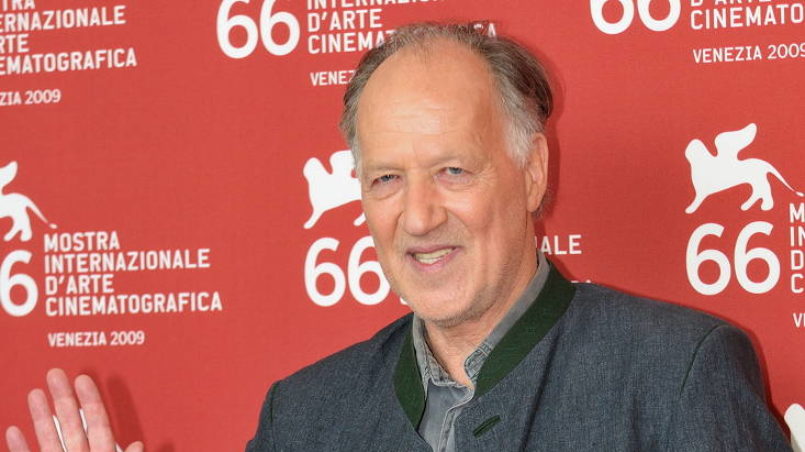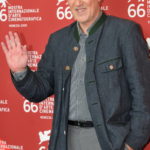“From One Second to the Next” and “Lo and Behold”

From the 12th January to 1st March 2017, the “Filmarchiv Austria” showed a retrospective in honor of Werner Herzog, the self-proclaimed “soldier of cinema”, presenting many of his best works in the time-honored Metro Kinokulturhaus. I went to see two of his works, “From One Second to the Next” and “Lo and Behold: Reveries of the Connected World”, and may now present them to you as a summary with subsequent personal opinion.
2016’s “Lo and Behold: Reveries of the Connected World” devotes itself to one of the most important technological revolutions in the history of humanity: the Internet.
From One Second to the Next
X-MAN
Milwaukee, Wisconsin: Valetta, the mother of eight-year-old Xzavier, tells us of a time when her son was bursting with energy and could hardly be contained. That was before his accident. Since then, Xzavier, lovingly referred to as X-Man, has been paralyzed and relies on a ventilator to breathe. His wheelchair is equipped with a machine that allows him to be mobile for short distances.
For the rest of the time, he is “tied” to his bed, where the stationary respiration machine is at work around the clock. Valetta often spends whole nights sitting next to the machine, in panic-like fear that it might stop working.
The driver of the vehicle that hit Xzavier had no chance to slow down in time, because her full attention was focussed on writing a text on her smartphone. The message was: I’m on my way. Tearing up, Valetta says: “I would like to ask her if she made it on time.”
A Letter from Martin
Bluffton, Indiana: The young family man, Chandler Gerber, tells us his story from the perpetrator’s perspective. The village he lives in is home to many Amish (an Anabaptist-Protestant faith community), who attach great importance to communion and seclusion. In addition, the carriage is their preferred means of travel for long distances – a vehicle hopelessly defeated in modern traffic, as will soon turn out.
On this disastrous day, Gerber was busy writing a text message on his smartphone and ran straight into the rear of an Amish coach. Three people lost their lives that day.
The extent of this tragedy exceeds that of young Xzavier in the previous chapter, in that the victims are three children aged two, three and seventeen. The policeman, who was summoned to the place of the accident on this day, describes the scenery in detail, and it is obvious that it is still heart-wrenching for him.
Chandler Gerber, on the other hand, makes a remarkably calm, composed impression over the entire duration of the interview – perhaps it is due to the fact that shortly after his mistake, he received a letter from the father (Martin Schwartz) of the three children, explaining that they were all sad at the painful loss, but accepted the god-given fate and want to live their lives without hatred or accusations.
Our Sister Debbie
Colchester, Vermont: Debbie Drewniak’s life changed fundamentally from one second to the next, when one day, while she was walking her dog in front of her house, she was suddenly hit by a young female driver.
This driver, too, did not give traffic the attention it deserved – a text message on her smartphone was more important to her at this time. Debbie Drewniak pulled through, but can not get by without full-day care. Debbie’s younger sister, Elizabeth, and her brother, Karl, are largely responsible for this intensive care.
Because even though Debbie survived this accident, her faithful companion Charlie was not so lucky: her dog, who she had been taking out for a walk on this day, died at the scene of the accident due to his wounds.
Reaching for the Stars
Logan, Utah: Megan O’Dell stands beside an observatory telescope, trying to keep her tears under control as she tells the filmmaker the tragic story of her father, who recently lost his life together with a colleague, in the course of a traffic accident. He was a scientist of astronomy and spent countless hours with his daughter, watching the starry sky through the telescope.
This is followed by a change of scene. Reggie Shaw appears in the picture. A young man with a moody look and muted voice tells about his everyday life and his likes, one of these being texting. Another change of scene takes place, and John Kaiserman introduces himself to us in the appearance of a cowboy: black cowboy hat, a saddled horse right behind him, the rest of the picture shows a fenced pasture.
John is a blacksmith by profession and has no particular love for technological things. All the less so after the recent events in which he involuntarily played a central role.
Change of scene. Police officer Chad Vernon tells the story of the fatal car accident. One early rainy morning, Reggie and Megan’s father (accompanied by a colleague), are driving towards one another on the country road. At the passing point, Reggie is slightly off his lane – he is busy writing a text message just then – and hits the approaching car of Megan’s father, which starts to skid, and is rammed by the next oncoming car, following directly behind Reggie.. John Kaiserman is the driver of this vehicle.
John Kaiserman, by some miracle, emerges with only a few serious cuts and bruises. Reggie Shaw has since been tormented by deep feelings of guilt, and Megan suffers from bad nightmares. Megan tells how much she hated Reggie Shaw for a long time for taking her beloved father from her. For the sake of both, she decided at some point to forgive Reggie Shaw – a conciliatory, cordial embrace of these two persons represents the final scene of this chapter.
Conclusion
“From One Second to the Next” touched me deeply. Normally, actors have to show a lot of energy and talent to carry real emotions across the screen, especially when it comes to tragic scenes – and few of them succeed. This documentary is quite different, because the protagonists do not have to pretend anything, they simply have to reproduce what unfortunately has become a part of their lives. Musically perfectly supported, this work is a successful eye-opener.
Lo and Behold: Reveries of the Connected World
The tour begins at UCLA (University of California, Los Angeles), where Professor Leonard Kleinrock shows us the space where the first recorded transmission of a message took place between two geographically distant computers. The message appears rather unspectacularly in relation to the scope of the event: “LO”. Actually, the complete message should have been called “LOG”, but the receiver computer unfortunately crashed after receiving the first two letters.
Shortly thereafter, the first major network in America was put into operation – ARPANET. Vincent Cerf and Bob Kahn found considerable fame when they developed the TCP (Transmission Control Protocol) three years after the development of ARPANET, a protocol that made the fluent, orderly information exchange between computers possible and is still in use today.
Next, Ted Nelson, also a pioneer of Internet development, gets the opportunity to tell us about his very personal vision of the Internet, which unfortunately could never be implemented because the World Wide Web took a different path.
Adrien Treuille, professor of computer science, shows another great potential to use the Internet with his computer puzzle “EteRNA”, which aims to make people playfully invent new RNA molecules worldwide and thus make a valuable contribution to science.
Sebastian Thrun, former Vice President of Google, reports on his experiences when he was still a professor of artificial intelligence at Stanford University. At that time, he was already very successful – only very few were given the honor of teaching a room with 200 people. An almost ridiculous number compared to the 160,000 students he could already address and teach via internet at the time. Sebastian Thrun undoubtedly sees a completely machine-driven future for us humans.
Next stop: Carnegie Mellon University, where a team of soccer-playing robots, who should be able to defeat the reigning world champions by 2050 at the latest, are presented to us.
Another chapter is devoted to the dark side of the Internet. A family portrays the downside of uncontrolled information distribution over the Internet: a daughter of the Catsouras family who was killed in a car accident. Local authorities wanted to spare the family members the sight of the deceased and did not hand out any pictures. However, one of the photographers seemed to lack the necessary respect, since shortly after the accident photos suddenly appeared on the Internet.
Herzog leads us further into a remote area, where there is not a single radio tower within a radius of 15 kilometers. A refuge for people who are allergic to radio waves of any kind, and at the same time a place where space research is carried out – minimizing background radiation from our own planet is essential for this project.
A further change of scene takes place and shows a scientist of astronomy who explains to us what the Carrington Event is and why such an event could mean the end of the Internet. Kevin Mitnick, a hero in the computer-hacker scene, is given a chance to speak about his encounters with the FBI in Herzog’s film, and makes it clear that the biggest weakness is always the human being. An employee of the government agency, “Sandia National Laboratories”, provides insights into the vulnerability of networked weapon systems, trying not to reveal too much about this delicate issue – the name “Titan Rain” remains unanswered at the end of the conversation.
Elon Musk, known as the founder of PayPal, head of SpaceX and Tesla Motors, is given a significant amount of talk time in Herzog’s work: he talks about his vision of a soon-to-be colonization of Mars and why this project is so urgent.
The next station is Pittsburgh, known for its robot industry, which the state reanimated just before the collapse. There, in a factory, “CHIMP” is presented to us, a robot which – with limited capacity – is capable of independent thought and self-testing, conceived and developed for use in human life-threatening places, e.g. Fukushima.
Well-known company logos such as Shell, Honeywell or Amazon adorn the outer skin of the robot and simultaneously reveal the enormous potential of this industry. In the penultimate chapter, “The internet of me”, a person who definitely views the Internet and computer as a negative influence on the human being, rises to speak.
They are the enemies of human creative thinking.
Last change of scenery. In the year 2015 the “Wikipedia Emergency Project”, which aimed to print the contents of Wikipedia on paper, took place. The complete content of Wikipedia was then available in 91 books of 700 pages each. In the final episode of the film, a few people are asked how the Internet of the future could look and whether something like a global artificial intelligence akin to “Skynet” (from the film: “Terminator”) might be out to control mankind:
Everything is possible, nothing is certain. The Internet is already out of control. One can look to the future with excitement.
Conclusion
“Lo and Behold: Reveries of the Connected World” is characterized by a funny, varied composition, which has stimulated me on both a factual and an emotional level. Everybody’s point was made neither too long nor too short. I was particularly delighted with the contemplations of future developments because nobody leaned out too far with exaggerated forecasts.
Humility and restraint seem to be somewhat more widespread in the IT world at least.
Figuratively and musically a successful creation.
I rate both films as well worth watching!
Translation from German: Serena Nebo
Credits
| Image | Title | Author | License |
|---|---|---|---|
 |
Werner_Herzog_2009 | Nicogenin | CC BY-SA 2.0 |
